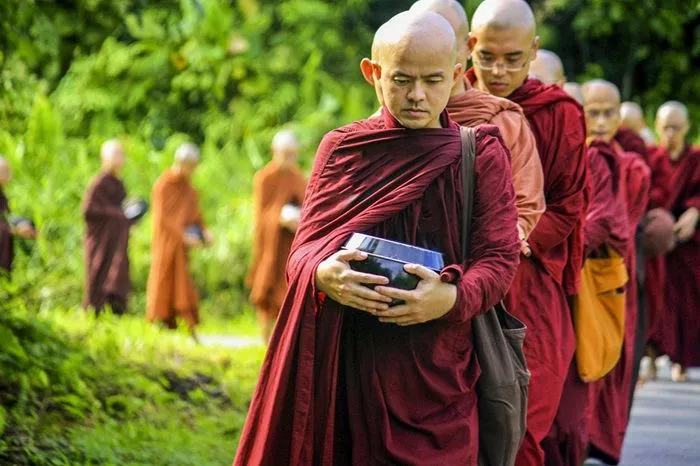Theravada Buddhism, often referred to as the “Teaching of the Elders,” is one of the oldest forms of Buddhism. It emphasizes the teachings found in the Pali Canon and is prevalent in countries like Sri Lanka, Thailand, Burma (Myanmar), Laos, and Cambodia. A central question often posed is: Do Theravada Buddhists believe in an afterlife? To answer this, we must delve into the concepts of death, rebirth, and liberation as understood in Theravada Buddhism.
The Concept of Samsara: The Cycle of Birth and Death
Understanding Samsara
In Theravada Buddhism, life is viewed as a continuous cycle known as samsara. This cycle consists of birth, death, and rebirth, extending over countless lifetimes. The nature of one’s rebirth is influenced by their actions, or karma, accumulated in previous lives. This cycle is characterized by suffering (dukkha), and the ultimate goal is to break free from it.
The Role of Karma
Karma refers to intentional actions, whether they are thoughts, words, or deeds. These actions leave imprints that influence future experiences and rebirths. Positive actions can lead to favorable rebirths, while negative actions can result in less desirable ones. This law of cause and effect underscores the importance of ethical conduct in Theravada Buddhism.
The Process of Death and Rebirth
The Moment of Death
At the moment of death, the physical body ceases to function, but the stream of consciousness continues. This consciousness is not considered a permanent self but a continuum that carries the imprints of past actions.
Immediate Rebirth
Theravada Buddhism teaches that rebirth occurs immediately after death. There is no intermediate state between death and the next life. The nature of the new existence is determined by the individual’s accumulated karma. This immediate transition underscores the urgency of cultivating wholesome actions during one’s life.
The Realms of Existence
There are several realms into which one can be reborn, including:
Human Realm: Considered favorable due to the potential for practicing the Dharma.
Heavenly Realms: Inhabited by beings experiencing great pleasure but still within samsara.
Animal Realm: Characterized by ignorance and suffering.
Hungry Ghost Realm: Marked by insatiable desire and craving.
Hell Realms: Domains of intense suffering.
Each realm presents its own challenges and opportunities for spiritual development.
The Concept of Anatta: No-Self
Rejecting a Permanent Soul
A fundamental teaching in Theravada Buddhism is anatta, or non-self. This doctrine asserts that there is no eternal, unchanging soul or self. Instead, what we consider the self is a collection of five aggregates (khandhas): form, feeling, perception, mental formations, and consciousness. These aggregates are in constant flux.
Implications for Rebirth
Given the absence of a permanent self, what is it that undergoes rebirth? It is the stream of consciousness, conditioned by past actions, that continues. This process is likened to the flame of a candle lighting another; the new flame is neither identical to nor entirely separate from the old one.
Nirvana: Liberation from the Cycle
Attaining Nirvana
The ultimate goal in Theravada Buddhism is to achieve Nirvana, a state of complete liberation from samsara. Nirvana is characterized by the cessation of all forms of suffering and the end of the cycle of rebirth. It is attained through ethical living, meditation, and the cultivation of wisdom.
The Arahant Ideal
An Arahant is someone who has realized Nirvana in their lifetime. Upon the death of an Arahant, there is no further rebirth. This state is referred to as Parinirvana, signifying the complete cessation of the aggregates and ultimate freedom from samsara.
Funerary Practices and Beliefs
Significance of Funerals
In Theravada cultures, funerals are significant rites that reflect beliefs about death and the afterlife. They serve as a means to transfer merit to the deceased, aiding them in their journey through samsara.
Transference of Merit
It is customary for the living to perform good deeds and dedicate the merit to departed loved ones. This practice is based on the belief that such merit can positively influence the deceased’s future rebirths.
Monastic Involvement
Monks often play a crucial role in funerary rites, chanting sutras and guiding the ceremonies. Their involvement underscores the community’s connection to the monastic Sangha and the teachings of the Buddha.
Common Misconceptions
Reincarnation vs. Rebirth
While often used interchangeably, in Theravada Buddhism, rebirth differs from the concept of reincarnation found in other traditions. Reincarnation implies the transmigration of a soul, whereas rebirth in Theravada refers to the continuation of a causal stream without a permanent self.
The Intermediate State
Some Buddhist traditions speak of an intermediate state between death and rebirth. However, Theravada Buddhism generally rejects this notion, teaching that rebirth occurs immediately after death.
Conclusion
In summary, Theravada Buddhists do believe in an afterlife, understood as a continuous cycle of birth, death, and rebirth (samsara). This cycle is governed by the law of karma, and liberation from it is achieved through realizing Nirvana. The doctrines of anatta (non-self) and immediate rebirth are central to this understanding, shaping both the philosophical framework and the practical aspects of the tradition, including funerary practices and ethical conduct.

